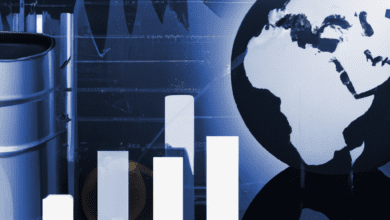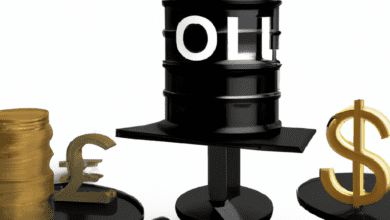Currency in Flux: Exploring the Interplay of Interest Rates, Geopolitics, and Trading Strategies in Forex Markets

In the complex world of foreign exchange (forex) trading, understanding the interplay of various economic and geopolitical factors is crucial for investors and traders alike. Interest rates play a pivotal role in determining currency values, influencing everything from inflation rates to investment flows. As central banks adjust their monetary policies in response to economic conditions, the ripple effects can lead to significant fluctuations in currency exchange rates. Moreover, geopolitical events often create volatility in forex markets, prompting traders to adapt their strategies to navigate uncertainty.
This article delves into the multifaceted relationship between interest rates and currency movements, exploring how economic indicators can be used to predict trends. We will also examine the strategic approaches necessary for trading major currency pairs like EUR/USD and GBP/USD, as well as the implications of carry trading, where investors seek to profit from interest rate differentials. Additionally, we will discuss the rise of digital currencies and their disruptive potential on traditional forex markets. Through this comprehensive analysis, we aim to equip readers with the insights needed to effectively engage in the dynamic forex landscape.
- 1. **Interest Rates and Currency Fluctuations: A Deep Dive into Exchange Rate Dynamics**
- 2. **Geopolitical Tensions and Forex Markets: Understanding the Ripple Effect**
- 3. **Navigating the Forex Landscape: Strategies for Major Currency Pairs and Beyond**
1. **Interest Rates and Currency Fluctuations: A Deep Dive into Exchange Rate Dynamics**
Interest rates play a crucial role in determining currency values and their fluctuations in the foreign exchange (forex) market. When a country's central bank adjusts interest rates, it directly affects the yield on that country's assets, influencing foreign capital flows and ultimately the strength of its currency.
Higher interest rates typically attract foreign investors seeking better returns on investments, leading to an increase in demand for that currency. For instance, if the European Central Bank raises interest rates, the euro may appreciate against other currencies as investors move funds into euro-denominated assets. Conversely, lower interest rates can lead to depreciation, as investors seek higher yields elsewhere.
The relationship between interest rates and currency fluctuations is often illustrated through the concept of interest rate parity, which posits that the difference in interest rates between two countries should equal the expected change in exchange rates. Traders closely monitor central bank meetings and economic data releases, as these events can signal potential interest rate changes and lead to immediate reactions in the forex market.
Additionally, the anticipation of interest rate changes can create volatility in currency values. Speculation around future rate hikes or cuts can result in significant short-term fluctuations, as traders position themselves ahead of actual changes. This dynamic highlights the importance of central banks in shaping currency values, with their policies not only affecting current exchange rates but also influencing market expectations and sentiment.
In summary, interest rates are a fundamental driver of currency fluctuations, serving as a key indicator for forex traders. Understanding the implications of interest rate changes is essential for making informed trading decisions and navigating the complex landscape of currency exchange dynamics.
2. **Geopolitical Tensions and Forex Markets: Understanding the Ripple Effect**
Geopolitical tensions play a significant role in influencing forex markets, often leading to volatility and shifts in currency values. When geopolitical events occur—such as conflicts, elections, or diplomatic disputes—investors react swiftly due to the perceived risks associated with these developments.
For instance, tensions in the Middle East can lead to fluctuations in oil prices, which in turn affect currencies of oil-exporting nations. A rise in oil prices typically strengthens the currencies of these countries, while a decline can weaken them. Similarly, political instability in a region can lead to capital flight, where investors move their assets to perceived safe havens, such as the US dollar or Swiss franc, resulting in appreciation of these currencies.
Market sentiment is another critical factor influenced by geopolitical events. For example, during times of uncertainty, traders may adopt a risk-averse stance, leading to increased demand for safe-haven currencies. Conversely, positive developments, such as peace agreements or favorable trade negotiations, can boost investor confidence and strengthen riskier currencies.
Additionally, geopolitical tensions often prompt central banks to adjust their monetary policies in response to economic instability. These changes can influence interest rates, further impacting currency valuations. For instance, if a central bank signals a potential rate cut due to economic concerns stemming from geopolitical events, its currency may weaken as investors seek higher returns elsewhere.
Overall, understanding the ripple effect of geopolitical tensions on forex markets is crucial for traders. By monitoring global events and assessing their potential impact on currency values, traders can make informed decisions and adapt their strategies accordingly.
3. **Navigating the Forex Landscape: Strategies for Major Currency Pairs and Beyond**
Navigating the foreign exchange (forex) landscape requires a blend of understanding market dynamics, implementing effective strategies, and adapting to ever-changing economic conditions. When focusing on major currency pairs like EUR/USD and GBP/USD, traders often employ several key strategies to optimize their trading outcomes.
One commonly used approach is **technical analysis**, which involves studying historical price charts and identifying patterns or trends. Traders utilize various indicators, such as moving averages, Relative Strength Index (RSI), and Fibonacci retracements, to forecast potential price movements. Technical analysis can help traders determine optimal entry and exit points, manage risk, and identify support and resistance levels.
**Fundamental analysis** is another critical strategy, especially for major currency pairs. This approach focuses on economic indicators, such as GDP growth, employment figures, and inflation rates, to gauge a currency's strength or weakness. For instance, if the European Central Bank signals a potential interest rate hike due to rising inflation in the Eurozone, traders might anticipate an appreciation of the euro against the dollar. Staying informed about geopolitical events and central bank policies is essential, as these factors can significantly impact currency valuations.
In addition, **risk management** plays a crucial role in trading strategies. Successful traders often employ techniques such as setting stop-loss orders and using position sizing to protect their capital. This helps to mitigate potential losses during volatile market conditions, which can be influenced by unexpected geopolitical developments or economic data releases.
**Scalping and day trading** are popular strategies for those looking to capitalize on short-term price movements. These methods involve making numerous trades within a single day, aiming to profit from small fluctuations in currency values. Traders who prefer this approach must have a keen eye for market trends and the ability to react quickly to changing conditions.
Overall, effectively navigating the forex landscape demands a combination of technical and fundamental analysis, disciplined risk management, and a keen awareness of global events. By employing these strategies, traders can enhance their chances of success in the dynamic world of forex trading.
In conclusion, the intricate relationship between interest rates, geopolitical events, and currency exchange rates underscores the complexity of the forex market. As we’ve explored, interest rates serve as a primary driver of currency value fluctuations, influencing trader sentiment and investment decisions. Geopolitical tensions add another layer of uncertainty, often leading to swift market reactions that traders must navigate with care.
The strategies for trading major currency pairs like EUR/USD and GBP/USD highlight the importance of a well-informed approach, considering both macroeconomic indicators and central bank policies. Understanding the role of central banks is crucial, as their actions can significantly shape currency values and market expectations. Additionally, inflation remains a critical factor; traders must adapt their strategies to account for its impact on currency movements.
Carry trading presents an opportunity to capitalize on interest rate differentials, yet it requires a keen awareness of changing market dynamics. As digital currencies continue to rise, their influence on traditional forex markets will likely evolve, presenting both challenges and opportunities for traders.
Ultimately, leveraging economic indicators to predict currency movements is essential for success in forex trading. By synthesizing these various elements—interest rates, geopolitical events, trading strategies, inflation, and the emergence of digital currencies—traders can develop a comprehensive understanding of the forex landscape, positioning themselves to make informed decisions in an ever-changing market.





